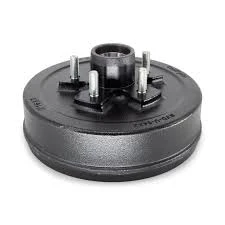
-
 Afrikaans
Afrikaans -
 Albanian
Albanian -
 Amharic
Amharic -
 Arabic
Arabic -
 Armenian
Armenian -
 Azerbaijani
Azerbaijani -
 Basque
Basque -
 Belarusian
Belarusian -
 Bengali
Bengali -
 Bosnian
Bosnian -
 Bulgarian
Bulgarian -
 Catalan
Catalan -
 Cebuano
Cebuano -
 Corsican
Corsican -
 Croatian
Croatian -
 Czech
Czech -
 Danish
Danish -
 Dutch
Dutch -
 English
English -
 Esperanto
Esperanto -
 Estonian
Estonian -
 Finnish
Finnish -
 French
French -
 Frisian
Frisian -
 Galician
Galician -
 Georgian
Georgian -
 German
German -
 Greek
Greek -
 Gujarati
Gujarati -
 Haitian Creole
Haitian Creole -
 hausa
hausa -
 hawaiian
hawaiian -
 Hebrew
Hebrew -
 Hindi
Hindi -
 Miao
Miao -
 Hungarian
Hungarian -
 Icelandic
Icelandic -
 igbo
igbo -
 Indonesian
Indonesian -
 irish
irish -
 Italian
Italian -
 Japanese
Japanese -
 Javanese
Javanese -
 Kannada
Kannada -
 kazakh
kazakh -
 Khmer
Khmer -
 Rwandese
Rwandese -
 Korean
Korean -
 Kurdish
Kurdish -
 Kyrgyz
Kyrgyz -
 Lao
Lao -
 Latin
Latin -
 Latvian
Latvian -
 Lithuanian
Lithuanian -
 Luxembourgish
Luxembourgish -
 Macedonian
Macedonian -
 Malgashi
Malgashi -
 Malay
Malay -
 Malayalam
Malayalam -
 Maltese
Maltese -
 Maori
Maori -
 Marathi
Marathi -
 Mongolian
Mongolian -
 Myanmar
Myanmar -
 Nepali
Nepali -
 Norwegian
Norwegian -
 Norwegian
Norwegian -
 Occitan
Occitan -
 Pashto
Pashto -
 Persian
Persian -
 Polish
Polish -
 Portuguese
Portuguese -
 Punjabi
Punjabi -
 Romanian
Romanian -
 Russian
Russian -
 Samoan
Samoan -
 Scottish Gaelic
Scottish Gaelic -
 Serbian
Serbian -
 Sesotho
Sesotho -
 Shona
Shona -
 Sindhi
Sindhi -
 Sinhala
Sinhala -
 Slovak
Slovak -
 Slovenian
Slovenian -
 Somali
Somali -
 Spanish
Spanish -
 Sundanese
Sundanese -
 Swahili
Swahili -
 Swedish
Swedish -
 Tagalog
Tagalog -
 Tajik
Tajik -
 Tamil
Tamil -
 Tatar
Tatar -
 Telugu
Telugu -
 Thai
Thai -
 Turkish
Turkish -
 Turkmen
Turkmen -
 Ukrainian
Ukrainian -
 Urdu
Urdu -
 Uighur
Uighur -
 Uzbek
Uzbek -
 Vietnamese
Vietnamese -
 Welsh
Welsh -
 Bantu
Bantu -
 Yiddish
Yiddish -
 Yoruba
Yoruba -
 Zulu
Zulu
Comparing the Advantages of Disc Brakes and Drum Brakes for Optimal Performance
Which is Better Disc Brakes or Drum Brakes?
When it comes to vehicle braking systems, two primary types dominate the market disc brakes and drum brakes. Each has its unique design, advantages, and drawbacks, leading to an ongoing debate among automotive enthusiasts, manufacturers, and everyday drivers. Understanding the fundamental differences between these two braking systems can help you make an informed decision about which one might be better suited for your needs.
Structure and Function
Disc brakes consist of a flat, circular disc (or rotor) attached to the wheel, which is clamped by brake pads when the driver presses the brake pedal. This design allows for quick heat dissipation, making disc brakes more efficient in maintaining braking performance during intense or repeated use. Conversely, drum brakes consist of a hollow drum that rotates with the wheel, where brake shoes press against the inner surface of the drum to create friction and slow down the vehicle.
Performance Comparison
One of the most significant advantages of disc brakes is their superior performance, especially in high-speed or heavy-duty applications. They offer better stopping power and consistency, particularly during wet weather conditions. This is because disc brakes are less prone to water accumulation and can dry out quickly after exposure to moisture. Additionally, the design of disc brakes helps reduce brake fade, which is the loss of stopping power due to overheating.
On the other hand, drum brakes can struggle with performance under extreme conditions. When overheated, the expansion of the brake drum can lead to reduced effectiveness, making them less reliable in rugged or high-performance scenarios. That said, for light-duty applications or in lower-speed environments, drum brakes can still provide satisfactory performance.
Maintenance and Durability
which is better disc brakes or drum

In terms of maintenance, disc brakes are generally easier to service. Most of the components are accessible, making inspections and replacements more straightforward. The wear of discs and pads can be monitored easily, allowing for proactive maintenance before issues arise. However, they can be more costly to replace due to the higher price of components.
Drum brakes, while less expensive upfront, often require more frequent adjustments and can be more cumbersome to maintain. The internal shoe mechanism can be difficult to access, making repairs more complicated. Additionally, if one part of the drum brakes fails, it often necessitates the replacement of multiple components to ensure optimal performance.
Weight and Cost Considerations
Weight is another factor that sets the two systems apart. Disc brakes tend to be lighter than drum brakes, which can lead to improved fuel efficiency and vehicle dynamics. This is especially important for performance vehicles, where every ounce counts. However, drum brakes are typically less expensive to manufacture and install, which is why they are commonly found on budget models.
Conclusion
So, which is better disc brakes or drum brakes? The answer is not straightforward and largely depends on the intended use of the vehicle. For high-performance cars, trucks, or vehicles commonly used in challenging conditions, disc brakes are often the preferred choice due to their superior performance, reliability, and ease of maintenance. Meanwhile, for everyday vehicles or lighter applications, drum brakes may suffice, offering cost-effectiveness and decent performance for most driving situations.
In summary, both braking systems have their rightful place in automotive design. Drivers should consider their specific needs, driving habits, and vehicle type when determining which system is suitable for them. Understanding these factors gives a clearer picture of which brake system can deliver safety and efficiency on the road.
-
What Are Drum BrakesNewsJul.07,2025
-
Understanding Brake Drum MaterialNewsJul.07,2025
-
Semi-Trailer Brake Drum: A Key Component for Extreme Loads and Long-Distance TransportNewsJul.07,2025
-
Drum Brake Pads for SaleNewsJul.07,2025
-
Brake Drums for SaleNewsJul.07,2025
-
Brake Drum ManufacturerNewsJul.07,2025
-
Aluminum Brake Drums: The Future of High-Performance CarsNewsJul.07,2025
